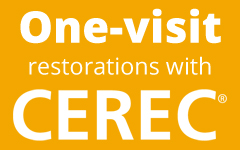Replace Missing Teeth

When teeth are missing, a fixed bridge is a good choice for replacing them. A bridge can prevent a chain reaction of problems, including:
- Shifting teeth
- Difficulty keeping teeth free of plaque and bacteria
- Loss of bone in the jaw
- Difficulty chewing
- Grinding and clenching
- Painful jaw joints (TMJ)
What happens when you lose a tooth?
When you lose a tooth, the biting forces change on the teeth next to the space, and they begin to shift, and since the opposing tooth no longer has anything to chew against, it begins to extrude out of its socket. These changes create places around the teeth that are hard to keep clean, so plaque and bacteria quickly accumulate. This accumulation can cause tooth decay and periodontal disease.
Changes in the bite can also put improper chewing forces on the shifted teeth, and this can lead to lose teeth and loss of jawbone, especially when periodontal disease is already present in your mouth.
An uneven bite makes it harder to chew you food and may lead to grinding and clenching. A bad bite can also create painful problems with your jaw joint, the TMJ.
To determine if a bridge is right for you, we’ll perform a thorough examination to make sure that the surrounding teeth can provide a strong foundation for the bridge. The exam often includes taking x-rays, and probing around the teeth to check for periodontal disease. There are a several kinds of bridges, so we’ll talk with you about the best type for your situation.
A bridge replaces missing teeth, and it’s a great way to maintain a stable bite and restore your smile.
Alternatives for bridges
When you’re missing one or more teeth, you have several options, including a partial denture, an implant, or a bridge. A partial denture is a removable replacement for missing teeth. It may work well if several teeth are missing throughout your mouth because it fills in the spaces and restores your bite.
An implant with a crown can also replace a tooth, and it doesn’t require us to work on the teeth next to the space. However, it requires surgery, and treatment time is much longer.
- 3-Unit Bridges
- Permanent Bridges
- Temporary Bridges
- Cantilever Bridges
- Maryland Bridges




